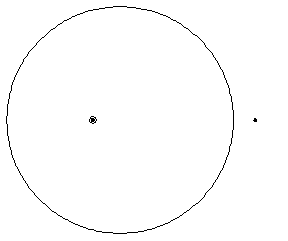Atoms with rabbit ears ?
If you are not interested in Noble Gas chemistry, you probably have never handeled atoms in your chemists life (atomic beams, reactions in crossed beams, mass spectrometers, lasers, ultrahigh vacuum etc..). You have surmised their transient existence during a chemical transformation rather than seen any of their signatures. We write atomsymbols in our equations but actually mean a stable form of that element. So, it might be, that you are not terribly interested in spherically symmetric atoms. You might prefer a mental image which reveals the atoms expected behavior in regard to its chemical reactivity. Remember, that the Periodic Table has been discovered and systematically filled by cleverly ordering the elements on a mass scale according to their chemical behavior, atomic volume, and spectroscopic information (not yet understood as proper atomic signatures). Later, nuclear properties had only to correct a couple of misfits. The triumph of the Rutherford-Bohr model of the atom, which was able to derive the PT, had been a déjà-vue for many chemists of the time. Why? After the discovery of the Nobel Gases the structure of the PT, as then known, was complete. It IS the map of the atoms as revealed by their chemical properties and did not need a deeper "why?" for most chemists. The mathematical regularities of the numerical "periods" [2],[2,6],[2,6,10],[2,6,10,14], ... is a projection of radial and angular spherical functions, invented in the 18/19th century by Laplace, Legendre and Laguerre, but with odd numbers: [1],[1,3],[1,3,5],[1,3,5,7], ... . It could have been identified as a deeper structure for the PT at the end of the 19th century, had the chemists been talking to mathematicians and vice versa! This mapping did not happen mathematically but with the intermediate of a physical model, based on that mathematics (and N. Bohr glossed over the odd/even number problem, which Pauli had not yet explained!). It was an epochal discovery for physics: On one written page the painstaking labor over more than a century of the chemists from Lavoisier to A.Werner with an unbelievable wealth of empirical data obtained a clearly visible structure in a completely alien guise. Chemists had (have) a problem with the nuclear-electronic shell model. But, for the first time, this opened the eyes for the fact that physics is a basis to chemistry for investigating the properties of matter (and this is not reductionism, one cannot reduce German to English, one translates back and forth between languages and learns from both).
| G.N.Lewis (and I. Langmuir, W. Kossel) reacted promptly to the new possibilities and tweaked the Rutherford-Bohr model for chemical applications by giving the atoms dots as electronic decorations. Electrons as localized dots? How did he get away with this? His genius has interpreted the even numbered PT and seen the pair and the octet as observed through all of molecular chemistry, but without any visible approach to explanation. Then G.E.Uhlenbeck & S.Goudsmit (1925/26) and H.Urey (1926) postulated electron spin and in the same year W.Pauli explained atomic spectra and beam experiments (O.Stern & W.Gerlach) with two spin states of the electron and the exclusion principle.- An electron theory of chemical bonding was thus born, electron pairs, lone pairs, octet rule, and bad smell for single dots, the radicals! ... It has changed the chemists perception of his science! Lewis also established a simple way to symbolically express what later became Hund's rules and the "Aufbau-principle", already transposed to the molecular world and thus paving the way for Mulliken.
Hence: In regard to these successes, why should chemists not decorate their chemical atoms with a unique number of "electronic hooks", if this serves their purpose, to order and rationalize chemical facts, rather than talk about n,l,m, the array of quantum numbers characterizing the eigenfunctions of the electronic motion in a spherical Coulomb field?
A simple answer: Well, we need n,l,m (and their molecular and group-theoretical derivatives) if doing spectroscopy. We can not go back to 1900, the time of Wilhelm Ostwald, when chemists were proud about their autochthonous concepts! We have profited too much from the physicists' insights and the precise measurement techniques their theories provided for our molecular world to resign to a stubborn chemists point of view. Quantum Mechanics is at the heart of X-ray crystallography (invented before QM!), mass-spectrometry, electron microscopy, UV-VIS-, vibrational-, rotational-, NMR-, EPR-, photoelectron-spectroscopies, Tunneling microscopy and many more. If you use some of these techniques - nobody can neglect them today - you have to learn the theories which underly their principles and help you understand results and avoid misinterpretations. Anything else would be unscientific. The problem remains, that all this is much too complicated to being taught correctly in high school or even at the entry level of universities. However, avoiding the subjects brings you right back to Wilhelm Ostwald and German chemistry until after WWII. |
